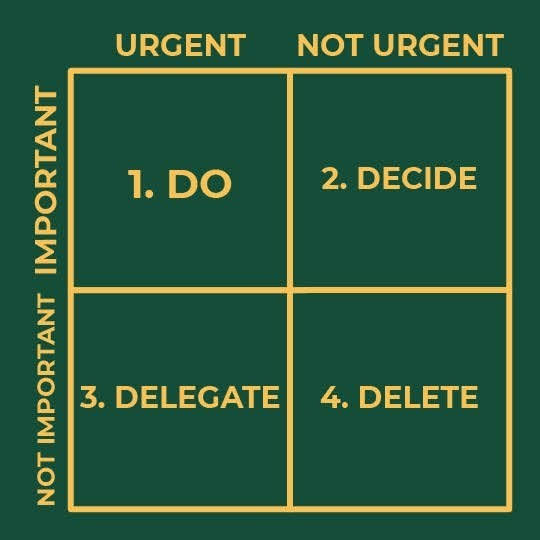This post is part 2 of The Ultimate Guide To Time Management.
If you haven’t already read the previous post, check that out here.
General Time Management Tips
You’ve now learned about two core approaches to time management. These were Parkinson’s Law and Time Blocking. You likely now have a solid understanding of the primary ways of approaching your time.
Sometimes, it’s possible that these methods aren’t applicable. At such a time we fall back upon more generalised tips for time management. This will help us to build a secure foundation upon which to manage our time.
Don’t overschedule your day
Acknowledge that you need free time for your own wellbeing. This will also help to prevent burnout. Also, remember to take breaks and wind down before sleep.
Reading is a great hobby to pick up for both breaks and winding down. I’m currently reading the Stormlight Archives. 10/10!
Know your priorities
What’s most important to you right now? What’s most important to your life in the future?
You can ask certain questions to help decide if something is a priority, such as:
- What does my schedule look like without this?
- When I’m on my deathbed, will I regret not doing this?
Additionally, make use of Eisenhower’s Matrix, found below.
Categorise activities into the four boxes and act accordingly.

Make use of batching
Batching is grouping lots of similar tasks together. It’s then getting them all done in a single session.
The benefit of this lies in business theory; economies of scale. This is the savings you get from increasing production. Or, in this case, the time you save by doing more activities at once.
Some examples of things to batch include:
- Errands
- Chores
- Any shorter tasks that surround your main work
- Meal prep
You can learn more about batching here.
Learn to say no
Become mentally ok with saying no. Saying yes to one thing means saying no to another, so choose what will be best for you and your future.
When saying no, think about the person’s next step and suggest relevant actions. This will aid them in the process. It also makes the interaction positive rather than negative.
Set goals and rewards
This keeps you on track and ensures you stay motivated towards said goals.
Start with small tweaks to your routine. Build up from there.
Making too big a change at once could result in the collapsing of your efforts. Instead, start small with incremental changes and improve over time.
Set clear deadlines and enforce them
Read through the previous section on deadlines for more information. You can learn more by looking into SMART goals.
Don’t multitask
Multitasking slows you down. In theory, multitasking is actually impossible. It is repeatedly switching your attention between tasks.
Each time you do this, you disrupt your attention and you lose focus. So, to multitask, you are doing several tasks ineffectively, since it takes several minutes to regain lost focus. Instead, focus on one task, complete it, then continue to the next.
Link your actions to your goals
Without linking your actions to your goals, your actions will be of little relevance. So, your time isn’t optimised. Ensure that each action you take helps progress you towards your goals.
Eliminate distractions
This one’s common knowledge – to make better use of your time, stop getting distracted.
Turn off notifications. Invest in noise-cancelling headphones. Install social media and website blockers, and hang up a sign saying Do Not Disturb.
Schedule your day ahead of time. Schedule everything.
Do this the night before or at the end of the week for best results. Having clarity and knowing what to work on will help you to actually start and to keep going.
If it’s not on your calendar, don’t do it.
Do the most important tasks first – eat the frog.
Get the most important and most difficult tasks out of the way first. This ensures you complete them and sets a productive tone for the rest of the day.
Don’t get lost in the details
Don’t be a perfectionist. Focus on the big picture rather than micromanagement. Think about what will provide the most long-term value, then focus on that thing. Choose this over instant gratification and enjoyment right now.
Make plans for the end of the day
This could be things such as going out with friends. But, to do these activities, you first have to complete all the relevant work for the day.
Using this approach almost forces you to complete work by a certain time. This makes use of Parkinson’s law, ensuring that you are free to follow through with your plans.
Conclusion
Time management and self-management are essential skills for an effective and optimised life. Without using either correctly, we’ll be wasting our most valuable resource – time.
Through using the core methods of Parkinson’s Law and Time Blocking, we can get the most out of our time.
Congratulations, you’ve now reached the end of this ultimate guide. You now have all the information you need to begin managing your time properly!
Thanks for reading.
If you enjoyed this post or found it useful, share the site with your friends. We have loads of other useful posts if you want to learn more, so have a browse. Cheers!
Further Recommended Reading:
These posts are relevant to the post you just finished reading: